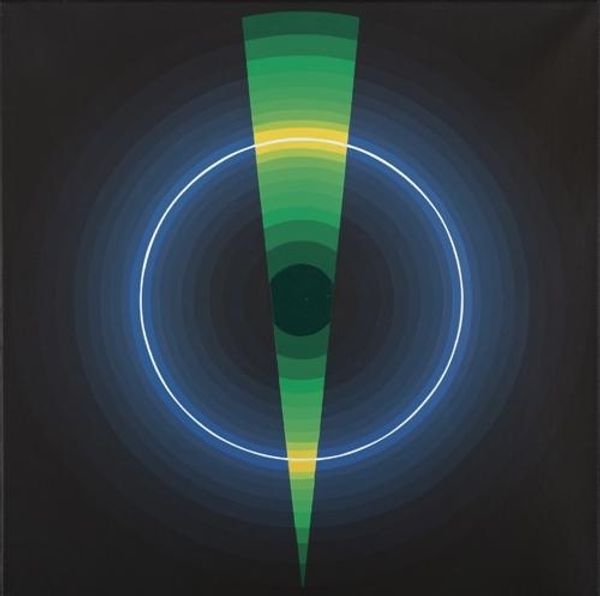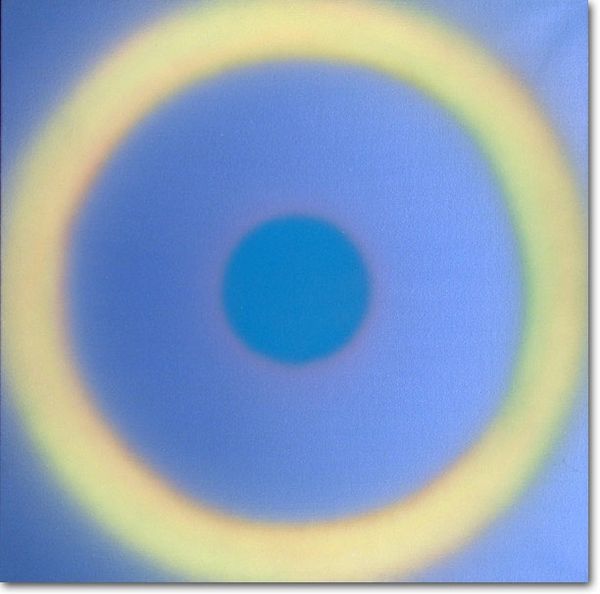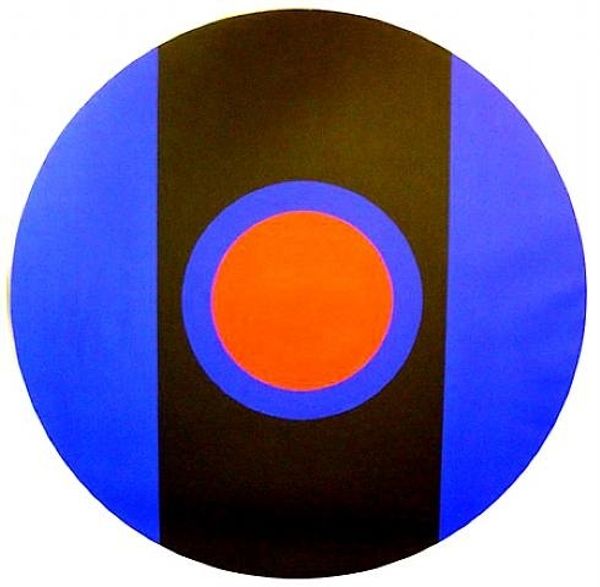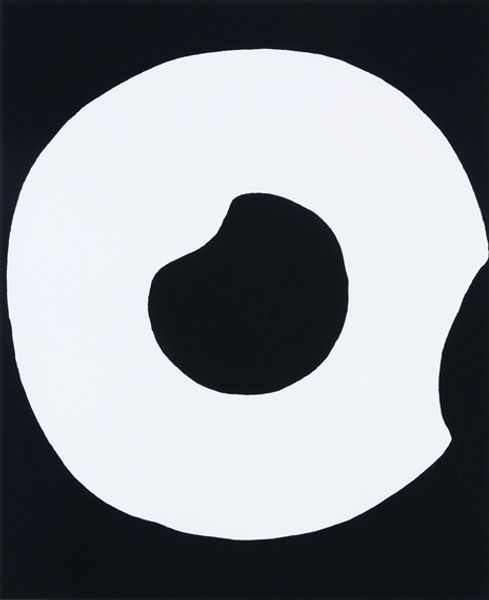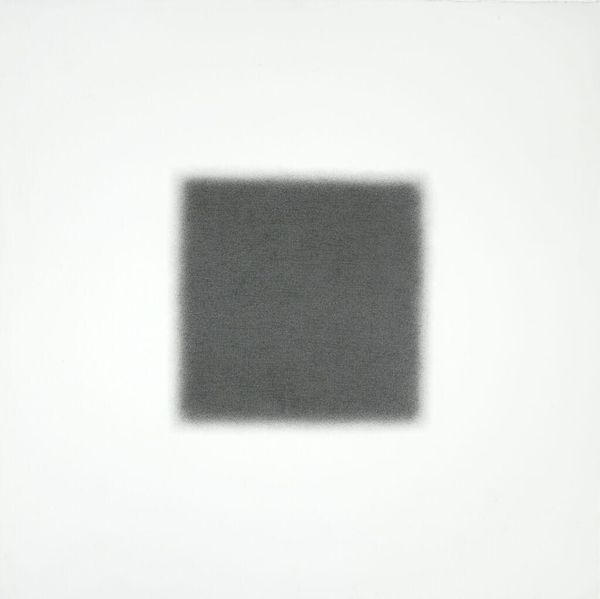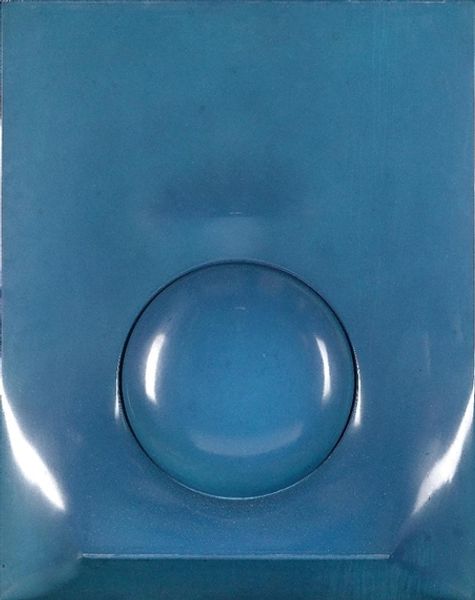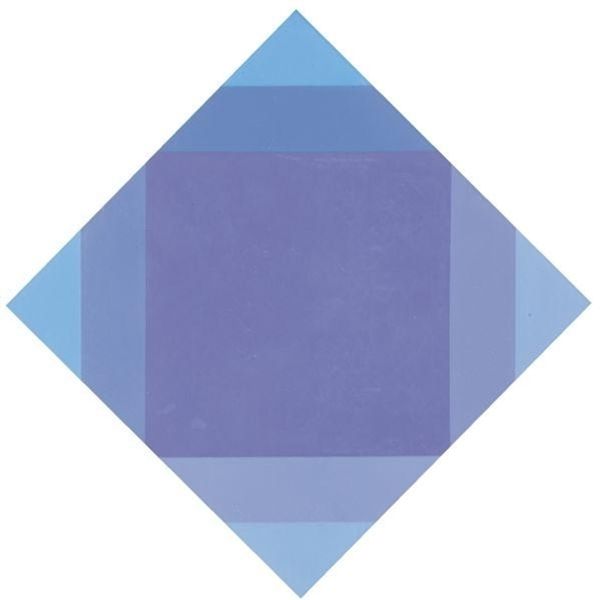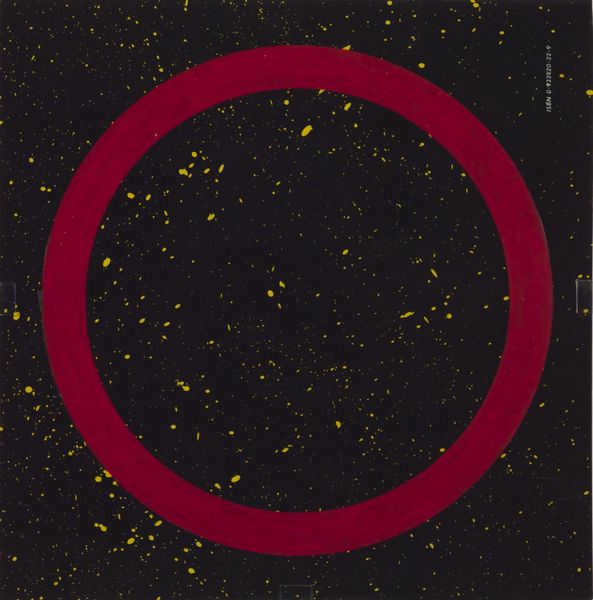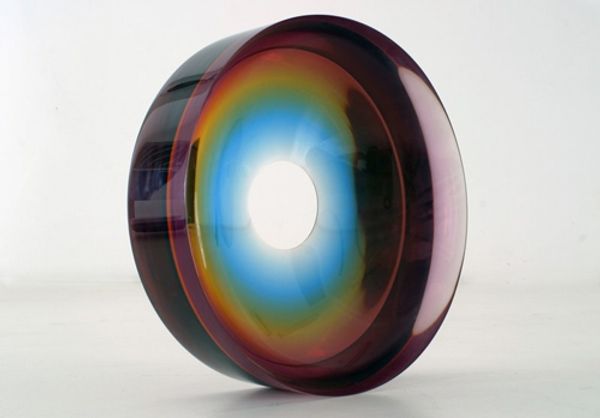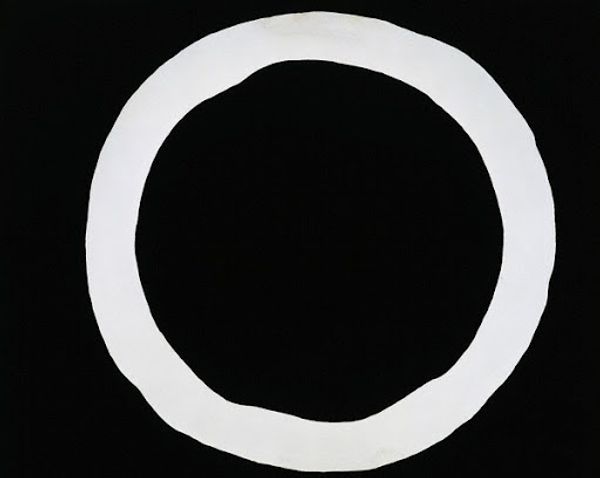
#
circular oval feature
#
abstract shape
#
3d printed part
#
circle
#
round design
#
sculptural image
#
circular shape
#
minimal pattern
#
white focal point
#
round circular shape
#
concentric circle
Copyright: Wojciech Fangor,Fair Use
Editor: Here we have Wojciech Fangor's "#14," painted in 1964. It's a series of concentric circles, and it feels almost like I'm staring into a void, or maybe even the future. How do you interpret this work? Curator: It’s interesting that you mention the future. Fangor's work from this period really reflects the anxieties and aspirations of a world undergoing rapid technological and social change. How do you think abstraction, especially with such a simple geometric form, engages with those ideas? Does it feel like an escape or a confrontation? Editor: I guess a little bit of both? It’s definitely not representational in the traditional sense, but it does bring up feelings related to seeing technological advances during the 1960's. Curator: Precisely. Fangor was deeply interested in how art could engage with psychological and social spaces. Think about the socio-political context of the '60s – civil rights movements, the Cold War, technological leaps. How might an artwork like this, devoid of explicit political imagery, still participate in those conversations? Consider how this invites viewers into an ambiguous space, potentially mirroring the uncertainties of that era. Editor: So it’s like, by not depicting anything specific, it makes room for all of those anxieties to exist at once? Almost a blank canvas for cultural projection? Curator: Exactly. Fangor's abstraction becomes a potent commentary precisely because of its ambiguity. It reflects how the individual confronts abstract systems of power and information, a concept highly relevant then, and even more so now. By engaging in abstraction, artists like Fangor can indirectly call into question oppressive social structures and create a place for speculation of all types. Editor: That gives me a completely different view of the piece. Thank you for opening my eyes. Curator: My pleasure! Art should speak to the times, even if it's a silent conversation, with paintings such as this one having deep historical connections to both social concerns and psychological understanding.
Comments
No comments
Be the first to comment and join the conversation on the ultimate creative platform.

